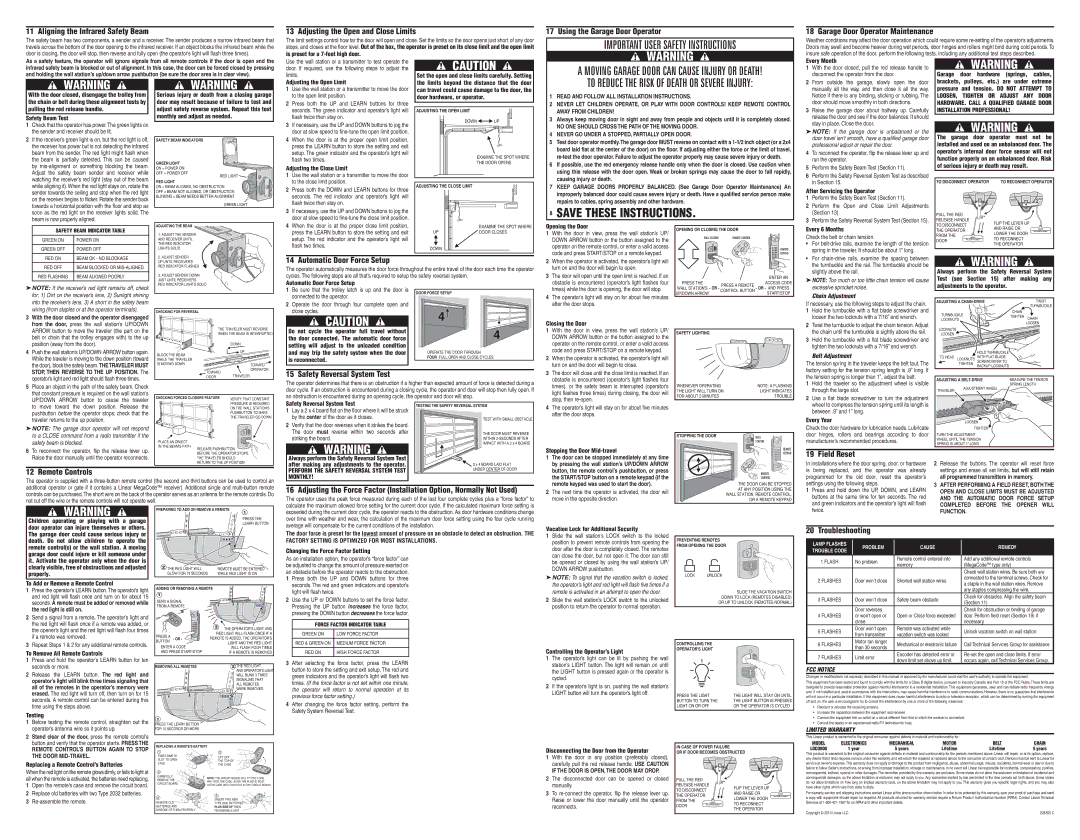LDCO800 specifications
The Linear LDCO800 is a cutting-edge door operator designed to offer seamless automation for sliding doors in various commercial and residential applications. Renowned for its state-of-the-art technology and reliability, the LDCO800 is engineered to enhance the convenience and accessibility of door systems while prioritizing user safety and energy efficiency.One of the primary features of the Linear LDCO800 is its powerful DC motor. This offering not only ensures quiet operation but also provides smooth and reliable door movement. The motor is designed to work efficiently with minimal power consumption, making it an eco-friendly choice. Additionally, the LDCO800 is equipped with an adaptive learning technology that optimizes performance over time, adjusting to the specific door's weight and usage patterns for enhanced operational efficiency.
Safety is a paramount concern in door automation, and the LDCO800 addresses this with integrated safety features. It includes advanced sensor technology that detects obstacles in the doorway. If an object is detected while the door is in motion, the system will automatically stop and reverse to prevent accidents, safeguarding users and property alike. This feature makes the LDCO800 especially advantageous in high-traffic environments.
Another significant characteristic of the Linear LDCO800 is its versatility. The operator can be customized for various door sizes and configurations, accommodating single and double doors while supporting both inward and outward opening. The user-friendly interface allows for easy programming of operational settings, including speed and force adjustments. This adaptability ensures that the LDCO800 can fit seamlessly into diverse architectural styles and functional requirements.
Furthermore, the LDCO800 features a robust construction designed to withstand the demands of daily use. Its durable materials and weather-resistant design make it ideal for both indoor and outdoor settings. The operator can be integrated with building management systems, allowing for further automation control and monitoring.
Overall, the Linear LDCO800 stands out as an exemplary solution in the automated door operator market. With its powerful motor, advanced safety technologies, and customizable features, it provides a reliable and efficient option for enhancing access control in a variety of environments. Whether in commercial spaces or residential properties, the LDCO800 is engineered to deliver excellence in performance and safety.

